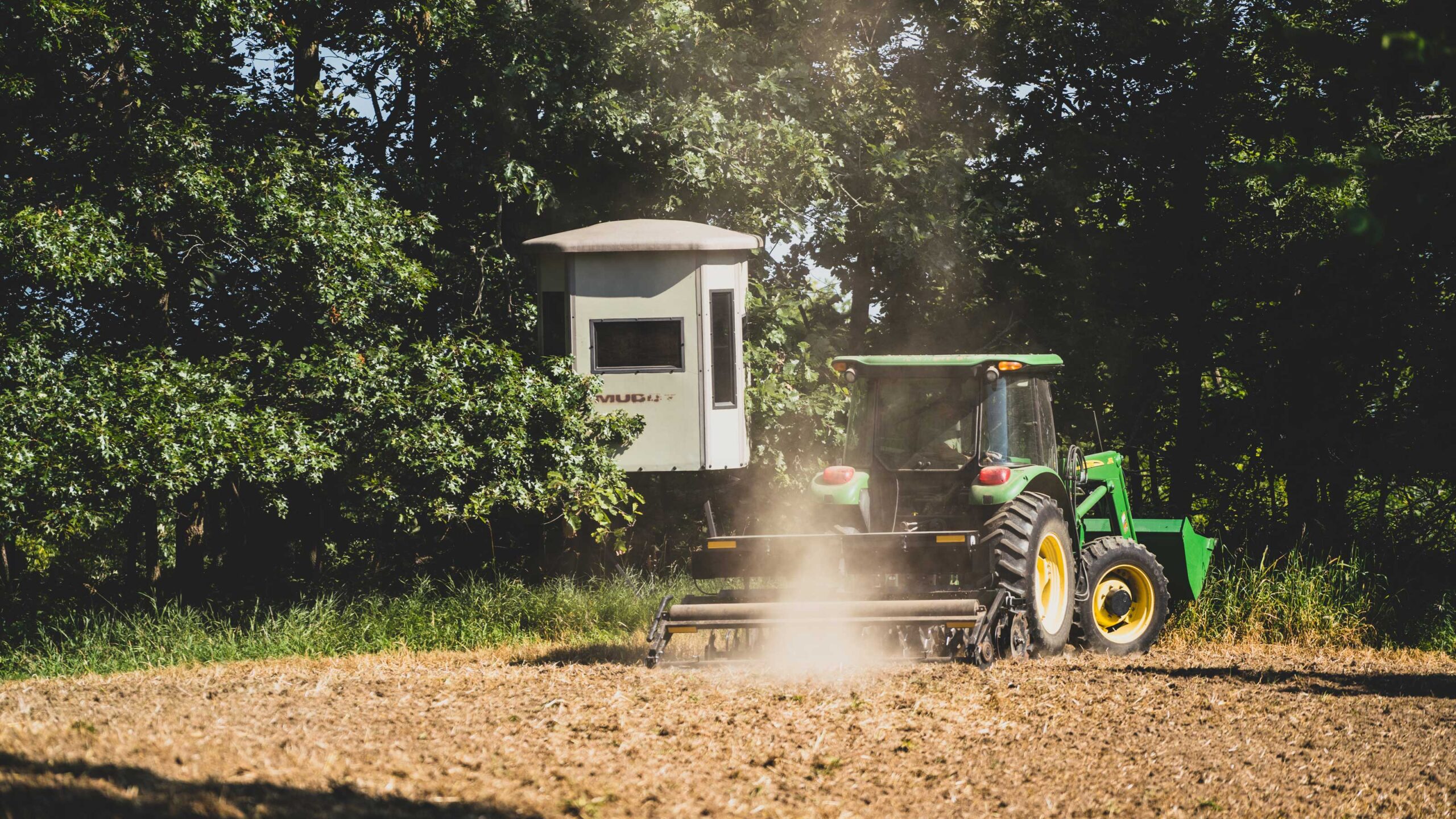When most bowhunters look ahead to October and November, they focus on immediate strategies: stand placement, scent control, and calling tactics. But the foundation for rut success starts much earlier.
After 30+ years of hunting mature bucks during peak rut, I’ve found that strategic food plot placement and proper seed selection in August can be the difference between tag soup and filled freezers.
Let me walk you through exactly how I set up my “Veteran Plot,” a killing field that draws rutting bucks into bow range.
The Strategic Mix: Four Seeds for Fall Success
For fall food plots, I don’t just throw down random seed and hope for the best. My approach is calculated, focusing on a specific blend of four seed types that provide early- and late-season attraction.
I always start with a cover, usually winter wheat, which forms the backbone of my fall plots. Winter wheat establishes quickly, providing almost immediate attraction while protecting the slower-growing plants.
On different properties, I might substitute rye or forage oats depending on soil conditions, but the principle remains the same: you need a fast-establishing base.
The real magic happens with the other three components:
- Purple top turnips
- Tillage radishes
- Beets
These brassicas and root crops create a progression of attraction. Deer hit the leafy tops early, but after the first frost converts starches to sugars in the roots, they’ll dig them up well into winter.
This extended attraction window keeps deer visiting the plot throughout hunting season.
Timing and Preparation: The Key to Weed-Free Success
Too many food plotters rush the process, planting seeds in poorly prepared soil without considering upcoming weather patterns. That’s a recipe for wasted time and money.
For my plot in Iowa, I executed a three-step prep process:
- Spray herbicide three weeks prior
- Work the soil thoroughly to create an optimal seedbed
- Time planting to coincide with rain coming in two days
In the Midwest, this mid-August timing is critical. Plant too early and summer heat will stress young plants; too late and they won’t establish before frost.
By killing competition weeks ago and planting into freshly worked soil, I’ve eliminated the need for post-emergence herbicide applications. This saves money and prevents a negative impact on young food plot plants.
The “Veteran Plot” Strategy: Creating a Rut Honey Hole
This plot’s location isn’t random. I’ve named it the “Veteran Plot” because I’ve tagged several mature bucks here on Veterans Day over the years.
The strategic layout makes it lethal. Bucks love to cruise through thick cover during the rut, but those areas are often impossible to hunt effectively. In my Veteran Plot, I cleared a small opening that surrounded by dense cedars and planted it with high-attraction food sources.
This creates a scenario where:
- Does pop into the plot for quick feeding
- Bucks follow the does or check the plot regularly
- The open area provides a perfect shot opportunity
- The surrounding thick cover makes it an ideal place to call and use decoys
It’s a funneling system that draws deer from their unhuntable & thick terrain into a perfect bowhunting setup.
Equipment Settings: Getting It Right the First Time
If you’re using a Plotmaster like I am, the settings matter.
I’ve found the optimal combination is setting number five with a driving speed of 5.5 mph. This combination distributes the seeds properly without wasting them through excessive application rates.
The Plotmaster makes this process efficient by combining multiple steps. In one pass, the front discs lightly work the soil, the seeder broadcasts the blend, and the cultipacker on the back ensures good seed-to-soil contact.
If you have access to a no-till drill, they are even better (but come with a higher price tag than mine).
The Value of Strategic Food Plots
Food plots are tactical tools that allow you to hunt areas that would otherwise be impossible to access. The key is finding where your plot can draw out the deer while allowing you to access its location without threading through it.
By creating small, strategic openings in thick cover, you essentially create a stage where rutting activity becomes visible and huntable. When you combine this with the right seed blend and proper timing, you create a hunting hotspot that consistently produces opportunities at mature bucks.
If you’ve struggled to get close to mature bucks during November, look back at your August land management. Whether you’re hunting the pre-rut, peak rut, or late season, a strategically placed food plot with the right seed blend makes all the difference.






 massmonopoly
massmonopoly